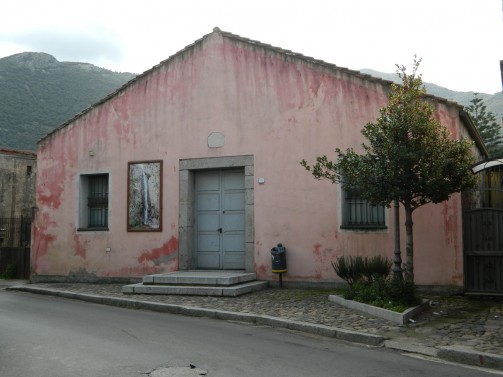Monte Frumentario or Granatico, “su magasinu de su monti” was a continuity of the work of the “Cause Pie”-” Mountains of mercy” as a common fund with negligible interest for sowing to benefit farmers and curb the scourge of usury. In the Diocese of Ales, Bishop Diego Cugia in the Letter of Regulations of August 21, 1685 addressed to all villages, gives instructions for the establishment or reorganization of the Mounts. In 1686 the warehouse of Gonnos and neighboring villages became operational. The Regulations are taken up in the diocesan synod by Bishop Francis Masones y Nin in 1696.
The Monte Granatico in Gonnosfanadiga is a rectangular building with a gabled facade, and on the entrance door is the plaque: “D.O.M. HOC PIETATIS OPUS-IPSIUS-IMPENSIS-INCOLARUMQUE OPE-EXTRUTUM FUIT-RECTORE SALVATORE ESCANO ANNO 1775,” where the expenses of the work refer to its own funds. The interior had two rooms: an entrance vestibule and a second room for grain storage. From 1786 it became Monte Numerario, with the ability to lend money, and in 1928 “Cassa Comunale di Credito Agrario” and then “Ufficio di Corrispondenza del Banco di Sardegna.” Clear historical continuity of functionality of the Institute. Historical documentation can be found in the Municipal Historical Archives.
Linas Fauna Exhibition.
Monte Granatico is currently home to the CEAS, which deals with education, training, and the dissemination of respect for the Environment, and manages the permanent exhibition of the fauna of the Linas, with an exhibition itinerary enriched by dioramas, descriptive panels, interactive stations, and a faunal collection of about 100 taxidermied or resin animals, symbols of the different species present in the area.









